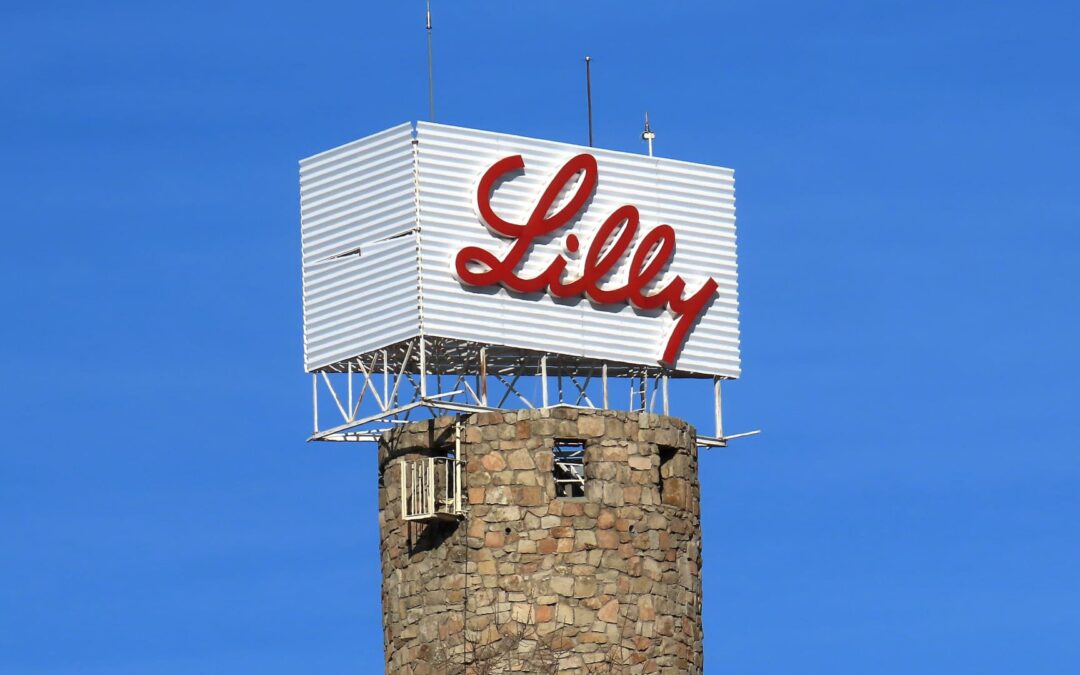Eli Lilly and Company, Pharmaceutical company headquarters in Alcobendas, Madrid, Spain.
Cristina Arias | Cover | Getty Images
Eli Lilly on Thursday reported third-quarter revenue and adjusted earnings that topped estimates on strong demand for its diabetes drug Mounjaro, but slashed its full-year profit guidance due to charges primarily related to its recent acquisitions.
Here’s what Eli Lilly reported for the third quarter compared with what Wall Street was expecting, based on a survey of analysts by LSEG, formerly known as Refinitiv:
- Earnings per share: 10 cents per share adjusted vs. 13 cents loss per share expected
- Revenue: $9.50 billion vs. $8.95 billion expected
For the quarter ended Sept. 30, Eli Lilly posted a loss of $57.4 million, or six cents a share, compared with a profit of $1.45 billion, or $1.61 a share, a year earlier. Excluding one-time items, the company posted a per-share profit of 10 cents.
The pharmaceutical giant generated third-quarter revenue of $9.50 billion, up 37% from the same period a year ago. That increase was primarily driven by growth from Mounjaro and other treatments, including breast cancer pill Verzenio and diabetes medication Jardiance, and the sale of one of its drug portfolios.
Eli Lilly recorded pre-tax “in-process research and development” charges of $2.98 billion, which are primarily related to a slew of recent buyouts, including DICE Therapeutics, Versanis Bio and Emergence Therapeutics AG. That compares to charges of $62.4 million in the third quarter of 2022.
The company lowered its 2023 adjusted earnings guidance to a range of $6.50 to $6.70, from a previous range of $9.70 to $9.90 per share.
But Eli Lilly reiterated its full-year revenue forecast of between $33.4 billion and $33.9 billion.
With a market cap of roughly $526 billion, Eli Lilly is the largest pharmaceutical company based in the U.S. The company’s stock has been on a tear this year, with shares up nearly 52% through Wednesday’s close.
Mounjaro, other drugs
Mounjaro, the company’s Type 2 diabetes injection, posted $1.41 billion in sales for the quarter. The drug was first approved in the U.S. in May 2022 and made just $97.3 million in sales in the year-ago period.
Analysts had expected the drug to bring in $1.28 billion in worldwide sales, according to estimates compiled by FactSet.
The lion’s share of Mounjaro revenue came from the U.S., where it raked in $1.28 billion, reflecting increased demand and higher realized prices due to decreased use of savings card programs.
Eli Lilly noted that it experienced “intermittent delays” fulfilling orders of certain Mounjaro doses due to significant demand, which negatively affected volume.
Investors have pinned high hopes on Mounjaro’s potential mega-blockbuster potential beyond diabetes, with initial studies suggesting that it may be even more effective at reducing weight than Novo Nordisk‘s popular Wegovy and Ozempic injections. Last month, Eli Lilly filed for Food and Drug Administration approval of the injection for chronic weight management.
Revenue growth was also driven by sales of breast cancer pill Verzenio, which rose 68% to $1.04 billion for the quarter. Sales of Jardiance, a tablet that lowers blood sugar in Type 2 diabetes patients, climbed 22% to $700 million for the second quarter.
Eli Lilly also sold the rights to its olanzapine drug portfolio during the quarter, which brought in $1.42 billion. Olanzapine, marketed under the brand name Zyprexa, treats psychotic conditions like schizophrenia and bipolar disorder.
Meanwhile, the company’s other diabetes medicine, Trulicity, raked in $1.67 billion in revenue, down 10% from the same period a year go.
The company also reported no sales from its Covid antibody treatments, compared with $387 million in the second quarter of 2022. The Food and Drug Administration rescinded its approval of the company’s antibody bebtelovimab in November.
Eli Lilly will hold an earnings call with investors at 9:00 a.m. ET.









